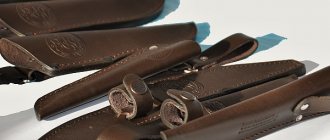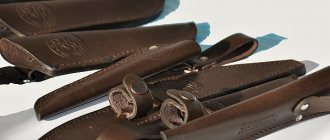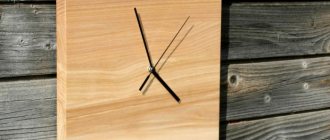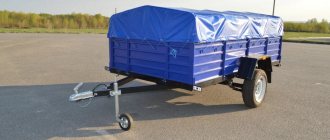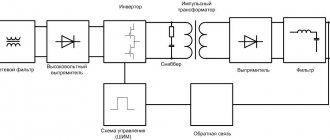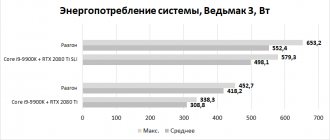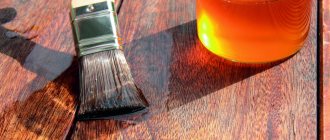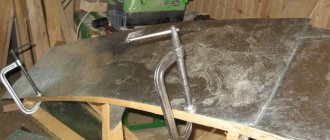In the current age of innovative technologies in production, hand tools are rarely used, and in mass production of products they are not used at all.
However, there have always been, are and will be craftsmen - cabinetmakers, for whom working with wood is not only part of their business, but also their favorite pastime. For them, making a product with their own hands is always a pleasure. Such specialists have a lot of hand carpentry tools in their workshop.
Drawings and diagrams
Before assembling the benchtop jointer, it is necessary to develop drawings. In the process of creating them, you should take into account the elements that will be part of the diagram. Standard jointers without additional features include:
- bed;
- shaft equipped with blades;
- rotating roller;
- engine;
- three tabletops;
- emphasis
In the process of developing drawings, the master must indicate the main distances between the key elements of the stationary structure. To do this, you will need to take into account the location of the motor, roller and shaft with blades. The circuit will allow you to determine how much the number of output rotor rotations will decrease if there is an increase in power, and vice versa.
Homemade surface planer from an electric planer
A wood jointing machine is made with your own hands from an electric planer; it is the main component of the tool. They plan the lumber directly with it. There is no need to worry about the performance of a hand-made mechanism - as practice shows, the quality of products does not decrease much when using such a machine, in comparison with purchased equipment.
First, you need to decide on the size of the parts that you plan to create on the future tool. In accordance with the selected dimensions, the dimensions of the machine itself are already selected. The width and height of the equipment body, the length of the pin, and the length of the thicknesser guides are determined.
What you will need to make a homemade surface planer with your own hands:
- Unoccupied manual electric planer.
- DIY drawings of a surface planer from an electric planer.
- Plywood and bars for assembling equipment casings, as material for assembling the casing.
- A small amount of free time.
Studs and guides
Then you need to correctly determine the location of the pin with which the surface planer will rise and fall. The efficiency of the future machine in working on parts directly depends on how well it is located.
For example, you can place it in the very middle of the body of the instrument, which is done quite often by inexperienced craftsmen. But this is far from the best option, since it does not provide ease of use, and also does not provide reliable and easy fixation. Ideally, in order to avoid any particular difficulties when working with the tool, you need to place the pin between the front and rear handle of the tool.
To provide the pin with the necessary mobility, a rolling bearing is installed on the top cover of the surface planer, converted from a planer. A nut is installed on the middle plate - with its help, the height of the thicknesser becomes easily adjustable, with a small step and increased accuracy.
Machine guides contribute to efficiency and precision when machining workpieces. They are made from the most ordinary wooden blocks, which do not require too much money. They should be slightly longer in length than the part for which they are intended, that is, they should not be made directly along the length of the workpieces, but leave a small margin.
Among other things, the lower plane of the marking machine must be arranged so that during operation it can be parallel to its knives. This way it will be possible to achieve maximum accuracy when processing a particular part.
Structural elements of a homemade electric planer
Electric planers appeared in the mid-20th century and became widespread. They have practically supplanted their manual counterparts. Thanks to their use, painstaking work has turned into more productive work. At the same time, the final quality of processing is high if this power tool is used correctly.
Factory products are represented by a wide variety of models, which, despite their different appearance, consist of structural units common to all. These electric planes work in two ways:
- using them as portable hand power tools;
- secured on a table or workbench in a stationary position (upside down - with the drum facing up).
The creation of a permanently fixed electric planer is considered the most suitable (simple) for independent practical implementation. The assembled device will have structural elements common to factory-produced products, such as:
- an electric motor, which is the drive mechanism of a homemade device;
- a protective cover that protects the worker’s hands from moving blades;
- on/off button;
- a drum with knives mounted on it, intended for planing wood;
- a transmission mechanism by which the movement of the electric motor shaft is transmitted to the drum with blades.
The role of the base of the homemade device will be performed by a slab with a flat surface, for example, made of metal, plywood or boards, or a table (workbench). In the latter case, you will not need to make legs for the machine. If the drum is attached to the stove, you will need to make a frame. It must be of a suitable height: match the height of the craftsman working with wood to ensure comfortable work.
How to work on a homemade machine
Thicknesser based on an electric planer
Working with a self-made surface planer is extremely simple. The machine pin is set at the required distance from the edge of the part, the required size is set, and the block is fixed. After this, the machine tilts slightly away from itself, as a result of which the cutting part of the pin is exposed. Then all that remains is to pull the tool towards you.
If properly executed, such a home-made machine will be almost in no way inferior in functionality to the simplest factory models of this type of electrical equipment for a home workshop.
https://youtube.com/watch?v=uE6ENWTKt0I
How to properly sharpen a knife for a hand plane
It is easiest to sharpen the blade of a hand-held plane. The algorithm looks like this:
- Unscrew the clamping bolts on the tool and remove the blade from the block.
- A coarse grinding stone is placed on the table and moistened with water.
- The knife is placed on the surface of the stone in accordance with the desired angle.
- Perform slow circular movements on the abrasive stone for several minutes.
- After rough grinding, take a stone with a fine grain and repeat the same procedure on it in order to properly polish the processed edge.
Advice! It is better to sharpen the knife at the first sign of dullness. In this case, the procedure will not take much time, and it will be easier to restore the desired angle.
When regrinding a piece of iron, you can make movements not only in a circle, but also in the direction away from you
Construction drawings
Drawings of the frame to which all the parts of the structure being created will be attached are given below.
The part being processed will rest on the surface of the plate, secured with 10 bolts to a frame welded from steel angles. There is a groove cut in it for a drum with knives. To guide the workpieces and prevent their lateral movement, a square is also attached to the base plate with M8 screws.
The shaft with knives (working drum) will be attached under the table top with M6 screws. To do this, bearings will be placed at its ends, which will be fixed to the plate with special fasteners. The movement from the electric motor to the working drum will be carried out due to a belt drive.
The motor is installed inside the frame on a shelf made of two steel strips, with holes drilled in them of the appropriate diameter for the frame mounting bolts.
It should be taken into account that the slots for the engine mounts (mounting grooves) need to be made several centimeters wide (2-3) in order to be able to tension the transmission belt.
The casing, fixed with M6 screws with spring washers to the corner, covers the belt drive. The power button is installed in a convenient place on the body of the electric plane.
When working with an angle grinder and drilling, you must wear glasses - they will protect your eyes from metal shavings. In general, when working with any tool, you should follow safety rules and use personal protective equipment.
Do-it-yourself thickness planer made from an electric planer
It is precisely this approach to solving most tasks for a surface planer that arise in a home workshop that we find most interesting.
First of all, this interest is based on minimal modifications to an existing tool to perform the work of expensive equipment with almost the same result.
By installing an electric planer on a platform with variable height, we get almost the same thickness planer. True, it is not the position of the work table that is regulated, but the position of the working tool in relation to the workpiece being processed, but this does not change the essence of the process. The role of the table here is played by a flat, powerful board with width limiters on the sides. They also serve as the mounting location for the main unit. But first, let's talk about him.
On the planer, we will replace the rear support plate with a homemade one made from OSB or plywood, with a thickness that ensures the same level as the front plate, which regulates the required gap (1 - 3 mm) for removing chips. Its width should correspond to the width of our improvised desktop.
On the sides of this plate, slats are screwed to attach the legs, the height of which is dictated solely by common sense. It is obvious that, based on the standard width of the plane knives of 82 mm, the thickness of the workpieces being processed should not be more than 100 mm, so the distance between the axes of the leg fastenings can be taken as 110 - 120 mm. Accordingly, their total length will range from 140 to 160 mm with a width of 35 mm and a thickness of at least 10 mm. The legs are fastened strictly at the same distance from the edge of the bar.
Installation of the assembled movable upper unit with an electric planer on the desktop is carried out locally, so that the fastening is strictly at the same level. This is done to ensure that its movement is parallel with respect to the base surface, which will ensure accurate processing of the workpiece.
The easiest way to set the height during work is by selecting slats of appropriate thickness, screwed onto the work table width limiters, or using other stands.
And the clamping of the working tool is ensured with spring ties or a harness, but for small workpieces this is not required at all. Also, in a given position, this parallel platform can be fixed with self-tapping screws.
Video of using a surface planer assembled by yourself:
When is a plane knife required to be sharpened?
Technological progress increasingly frees people from hard manual work. But even in the age of computer technology, not all operations are performed by machines; craftsmen often use a hand plane to manually give the desired shape to the workpiece. This is why it is so important to understand how the tool works and when it is necessary to sharpen the plane knives.
Today, two types of tools are used - a manual plane and an electric one. Hand tools use wide blades with a width of 45, 50 and 60 mm, while electric tools use blades with a width of 82, 102 and 110 mm.
It’s quite easy to understand that it’s time to sharpen your hand plane. When the chips begin to break during removal, and the work process requires additional effort, it becomes necessary to sharpen the blade.
With an electric planer, everything is a little more complicated - after all, the main working body here is the drum on which the cutting knives are installed. The first sign that the knife needs to be sharpened is the quality of the surface being processed - even after several passes it is not possible to obtain a smooth surface. The second sign is chips; after passing through the workpiece, the chips turn out to be small and have torn edges. The third sign is the condition of the instrument itself. It begins to overheat and it becomes more difficult for them to work. It is these signs that indicate that it is necessary to replace or sharpen the cutting tool of an electric plane.
Additional Assembly Tips
The metal for the stove is cut with a grinder or jigsaw. To cut a groove, it is convenient to use an electric jigsaw, having previously drilled a hole for its file in the slab, or an electric drill with an appropriate attachment. The edges of the slot are processed with a file so as not to get injured by them later.
You can secure the metal base plate with flat head screws (so that they do not interfere with work) or by welding it. The first option is preferable because, if necessary, the electric plane is easy to disassemble.
Before installing the drum, it is recommended to check the sharpness of its knives. If it is bad, then it is better to sharpen the blades immediately, using, for example, a regular whetstone. It is necessary to constantly ensure that the cutting attachments are well secured without distortion.
The basis for making your own knives are steel plates or hacksaw blades for metal, sharpened at an angle of 30 degrees.
The sequence of making an electric plane from a grinder with the working drum placed in a vertical position is demonstrated in the videos below. It also shows possible errors when assembling a homemade product.
https://youtube.com/watch?v=SY6xchF8VzU
Another option for creating a homemade electric planer from an old, non-working model is shown step by step in the video below.
Using the made power tool, you can process boards, beams and other workpieces. An electric planer assembled with your own hands must be used in compliance with safety requirements. The parts must be fed correctly to avoid getting your fingers caught in the drum.
There are many options for homemade electric planes. They have varying degrees of complexity, as well as different functionality. In this regard, the limitations are mainly related to the technical thinking of the inventors and the parts and materials available “at hand”. If necessary, the manufactured equipment can also be equipped with automation equipment.
How to make a sharpening device and sharpen a plane knife or chisel with your own hands
If one corner of the piece of iron protrudes, then it is corrected by lightly hitting the piece of iron with a hammer from the side of the protruding corner (Fig. 4c).
After the iron is installed correctly, it is finally secured with a wedge. The wedge should not be driven too hard to avoid splitting the shoulders.
Rice. 4 Setting up the plane: a - correct grip; b - technique of knocking out a knife (piece of iron); d — correction of metal misalignment (front view)
Metal plows are adjusted using a clamping screw. After tuning, the instrument should be tested on a board. A well-tuned plane easily removes chips and planes smoothly, without burrs or scratches.
Carpentry. Mastery lessons. Content
DIY thicknesser machine
The need to make a thicknessing machine with your own hands often arises in a situation where the use of conventional planing is clearly not enough to obtain a smooth surface for the future floor or parquet. It will not be possible to use an electric planer; the quality of the surface after an electric planer will probably be quite high, but it will obviously not be possible to get rid of the stripes that appear on the surface of the wood with each pass.
There is only one way out - try to make a thickness planer using an electric planer according to the drawings with your own hands. Thanks to the powerful bed and guide rails, the surface of the wood after processing the board with a thicknesser will be relatively uniform and flat.
Thicknesser from an electric planer
To build a full-fledged thickness planer, you first need to make a frame or table on which the tool will be mounted. The electric planer is equipped with a powerful commutator motor, which can easily cause injury, so the fastening of the homemade surface planer to the table must be strong and reliable.
The second step is to select a plan for the layout of the surface planer. The simplest version of the device is shown in the drawing and photo.
In fact, it is necessary to make a movable platform on which the electric planer itself will be mounted. The lifting height of the tool sole on the surface being processed is adjusted using four screw-nut pairs installed on the sides of the device.
The main difficulty in operating an electric planer is correctly adjusting the lifting height of the cutting edge. In normal mode, the extension of the knife above the plane of the sole is adjusted by a screw spring-loaded handle. The amount of overhang is usually checked visually or by hand, whereas when working in the thicknesser mode, you will have to be guided only by the readings of the scale on the handle.
The only disadvantages of a planer of this type will be the small width of the surface being processed, 90-100 mm, and the actual loss of the electric planer as a hand tool. It is clearly inconvenient to disassemble and reassemble a thickness planer every time you need to remove a couple of millimeters from a nailed board.
Homemade woodworking thickness planer
Often, when carrying out carpentry work, there is a need to use a thicknesser to run a board or a board glued together from slats with a width of more than 100 mm. Planks and panels made of wood 100-140 mm can still be somewhat leveled with an ordinary hand-held electric planer, provided that the material is securely fixed on the workbench. True, it is necessary to plan diagonally in several passes, followed by processing with a manual grinder.
Cross planing of wide boards can still be used for one or two boards, but if we are talking about two dozen boards or boards, then you obviously can’t do without a homemade thickness planer.
The simplest version of a surface planer is shown in the diagram.
The basis of the design is a massive steel frame welded from angle steel. An asynchronous motor with a power of 1.5-1.8 kW and a speed of at least 1200 rpm is installed in the lower part of the frame of the thicknessing machine. The motor must be mounted on a spring-loaded cushion to ensure tension on the machine drive belt and reduce vibration on the thicknessing knives.
The second most important element is a cylindrical block with slots for knives and bearing supports. You will have to buy this thicknesser part ready-made; making it yourself is almost impossible
The drum with bearings is installed directly on the machine bed after mounting the work table.
At the last stage, two pulleys are selected for the belt drive; the ratio of the diameters of the pulley groove should be in the range of 2.5-2.8. A pulley of larger diameter is mounted on the motor shaft, and a smaller one is mounted on the drum shaft. The rotation speed under load should not exceed 4 thousand rpm.
Methods for sharpening knives
Today, two main methods are used for tool dressing: machine processing and manual dressing. For the first method, an electric sharpening machine or a manual sharpener is used. For the manual method, abrasive stones of different grain sizes or sandpaper are used.
For knives with a straight edge, this is most often done in two stages - first sharpening on an electric sharpener, and then finishing on a stone by hand. And for curly or semicircular blades, the shape is first edited with a file or on a thin abrasive wheel of an electric sharpener. The second step is checking the shape - the blade is inserted into the plane and the correct shape of the cutting edge is checked. At the very end, finishing is done on a sharpening machine with a vulcanite wheel.
For critical work, in addition to an electric sharpening machine with abrasive wheels of different grain sizes and hand stones, a technique such as finishing on a leather belt using polishing pastes is also used. In this case, the edge turns out to be perfectly sharp.
main idea
Yes, such a homemade jointing machine, unlike serious industrial designs, has a number of disadvantages, namely:
- Cannot boast of high processing accuracy;
- The width of the workpiece is very small - only 110 mm;
- Lightweight is a disadvantage, since a heavy massive base always gives the device stability and, as a result, ease of use, which ultimately improves the quality of the result.
- Low power, limited by the power of a household electric planer;
- The body material is wood, that is, not durable;
However, it also has undeniable advantages that make it very useful for achieving certain goals and performing a number of tasks, since it has the following advantages:
- Low cost - serious jointing machines cost tens and hundreds of thousands of rubles, and the cost of this homemade jointing machine consists of the cost of the plane and materials;
- Compact and portable - it can easily be stored anywhere in the workshop and can be deployed for work in a matter of minutes.
- The simplicity of the design affects its reliability and maintainability.
- The ability to make the necessary dimensions of the machine “to suit you”, for example, you can increase the length of the work table or change the height.
Homemade equipment for a manual electric planer
In today's article we will look at the process of making homemade equipment for an electric planer. It can be used either separately or in combination with other devices.
We got the idea for a homemade project from the author of the YouTube channel JSK-koubou.
For the manufacture of equipment, it is best to use furniture plywood with a thickness of 20 mm. Alternatively, you can use a furniture panel as a basis.
In order not to buy furniture board, you can glue it yourself - from boards. And for this we recommend using homemade clamps.
Additional Assembly Tips
The metal for the stove is cut with a grinder or jigsaw. To cut a groove, it is convenient to use an electric jigsaw, having previously drilled a hole for its file in the slab, or an electric drill with an appropriate attachment. The edges of the slot are processed with a file so as not to get injured by them later.
You can secure the metal base plate with flat head screws (so that they do not interfere with work) or by welding it. The first option is preferable because, if necessary, the electric plane is easy to disassemble.
Before installing the drum, it is recommended to check the sharpness of its knives. If it is bad, then it is better to sharpen the blades immediately, using, for example, a regular whetstone. It is necessary to constantly ensure that the cutting attachments are well secured without distortion.
The basis for making your own knives are steel plates or hacksaw blades for metal, sharpened at an angle of 30 degrees.
Hacksaw blade
The sequence of making an electric plane from a grinder with the working drum placed in a vertical position is demonstrated in the videos below. It also shows possible errors when assembling a homemade product.
Another option for creating a homemade electric planer from an old, non-working model is shown step by step in the video below.
Using the made power tool, you can process boards, beams and other workpieces. An electric planer assembled with your own hands must be used in compliance with safety requirements. The parts must be fed correctly to avoid getting your fingers caught in the drum.
There are many options for homemade electric planes. They have varying degrees of complexity, as well as different functionality. In this regard, the limitations are mainly related to the technical thinking of the inventors and the parts and materials available “at hand”. If necessary, the manufactured equipment can also be equipped with automation equipment.
What is the sharpening angle of the knives of a manual and electric plane in degrees
If the tool has become dull, then it is not enough to simply sharpen the plane knives at home until they are sharp. It is necessary to maintain a certain angle, otherwise the blade, even after processing, will not be able to remove chips from the wood efficiently.
The indicator depends primarily on the type of workpieces used in the workshop. According to the rules, the sharpening angle of a plane knife is equal to:
- 20-25 degrees - for processing pine, aspen, larch, linden or other soft wood;
- 30-35 degrees - for planing oak, maple, pear, hornbeam and other hard workpieces.
Most often, the cutting piece of the tool already has a clearly defined sharpening angle. There is no need to re-shape it; it is enough to simply adhere to a clearly visible bevel on the metal.
Attention! When carrying out home sharpening, it is very important to firmly fix the tool during the process, otherwise the clarity of the angle will suffer.
How to extend the life of an electric planer
An electric plane is one of the main tools for woodworking. Properly configured, it is an indispensable assistant in the hands of a carpenter. If, over time, the tool settings have gone wrong, or you don’t know how to prepare the electric planer for work, then it is advisable to get specialized advice, which we are ready to offer in this material. Otherwise, all the work when working with an unregulated plane will go down the drain, and there will be little pleasure from such miserable work.
Like any tool, the plane must be properly adjusted before work. And an electric plane imposes even more stringent adjustment requirements than hand tools. Therefore, the following steps should be carried out before each work with such equipment.
The only warning before inspecting the tool is to follow the safety tips. So the cutting parts of the plane must be treated very carefully. After all, due to the fact that the cutters of this tool are extremely sharp, you can cut yourself on them even when the equipment is turned off, not to mention when the equipment is running. Otherwise, such equipment should be treated like any other power tool.
How to choose the right plane
Deciding which plane is best to choose is not as difficult as it seems at first glance. Hand planing tools are fairly simple designs where all the main elements are in plain sight.
To choose a high-quality and durable plane, professionals recommend paying attention to 3 points:
- Sole. It should not have visible damage or chips, it should be smooth without disturbing the geometry. The only exception is planes for figure cutting, where a stepped sole is initially provided for by the design;
- Knife. It is better to give preference to tool steel, which holds the sharpening angle well and is not subject to mechanical damage and wear. For factory planes, the blade should be firmly fixed to the body without play.
- Handles. Here you need to focus only on individual feelings. The tool must fit comfortably in your hand, otherwise it will be problematic to work with it.
If we talk about manufacturers, then when choosing a hand plane, you can pay attention to the products of Stanley and Sigma. Among power tools, electric planers from BOSCH and Makita are deservedly popular.
Required materials and tools
Let's consider the manufacture of the simplest design, designed for a planing depth of up to 1.2 mm and a width of processed wooden workpieces of up to 120 mm. To assemble such an electric plane with your own hands, you will need the following materials and parts:
- bearings;
- steel strips;
- pressure plates;
- M6 and M8 screws with nuts;
- spring washers;
- metal corners (20x20x3 mm);
- staples;
- sheet of plywood (10 mm) or metal (3-5 mm thick);
- belt drive pulleys installed on the shaft of the electric motor and drum;
- a drum (with one or two knives) from an old planer or electric planer, on which you can change cutting attachments;
- a working electric motor from a grinder, an old electric plane or a planer;
- belt;
- button (switch) to turn the electric planer on and off;
- wires and cord with plug;
- residual current device (RCD);
- capacitors (if the electric motor used is three-phase).
Installing a separate RCD for an electric plane in the panel (even directly on the machine) will increase electrical safety when working with equipment. Protection is selected according to the power of the working engine. The cord and wires must be of a suitable cross-section, taking into account the power of the installed electric motor.
Phase shifting capacitors must be connected in parallel. In this case, the required total capacity is determined by the power of the installed electric motor: approximately 100 μF per 1 kW. Capacitors must be designed for mains voltage.
To implement the project you will need the following tools:
- several wrenches designed to tighten the nuts on the bolts;
- roulette;
- building level;
- marker or pencil;
- welding machine with electrodes;
- an electric drill with drills and a circle of small diameter intended for cutting;
- a jigsaw with files for it for wood and metal or hand saws for a similar purpose;
- angle grinder complete with wheels for cutting metal.
- https://verstakdoma.ru/stati/instrument/samodelny/rubanok-svoimi-rukami/
- https://tehnika.expert/dlya-remonta/elektrorubanok/delaem-instrument-svoimi-rukami.html
- https://drevogid.com/instrumenty/ruchnoj-rubanok.html
- https://zdesinstrument.ru/ruchnoj-rubanok/
- https://stankiexpert.ru/ehlektroinstrument/rubanok-ruchnojj.html
A budget option for a homemade surface planer
This is the simplest method of using an electric planer as a surface planer. Of course, it would hardly occur to anyone to call this design a thickness planer, but in terms of the function it performs, this is exactly what it is.
We deliberately selected an option for wide blanks. Indeed, in this form it performs work that most industrial thicknessing machines cannot do precisely because of the width of the material being processed, and in our case it is limited only by the length of your hands.
Of course, we cannot recommend such a barbaric attachment of an electric plane - a rather expensive tool - to a moving platform. Much more interesting is the option of securing it, described in the previous section of the article, but using a wider platform and moving the slats along the width, and not along the axis of the tool
In this case, the danger of damaging anything important inside the plane body is reduced to zero.
In the example given, a glued assembly of wooden slats of various sizes and even types of wood is processed.
Height adjustment is made by installing calibrated bars on the sides of the work table, two sets of which will allow you to process an unlimited number of workpieces on both sides to a given thickness.
Knife design
The knife of a hand plane consists of a working and a supporting part. In the configuration of the working part of the knife there are:
- A chamfer that forms on the back of a blade. It reduces the force of cutting the knife into wood by eliminating friction of the rear part against the workpiece material.
- The rake angle, which in most cases coincides with the accepted inclination of the knife in the plane body.
- The back corner of the chamfer itself.
- The working angle of the sharpening, which is equal to the difference between the values of the chamfer angle and the angle of inclination of the knife in the plane.
For the durability of the tool in question, the rake angle is of greatest importance: it is this that determines the smoothness of the planed surface, the conditions for removing chips from the processing zone and the load on the blade.
When choosing the optimal value for a given angle, the following factors are taken into account:
- Physico-mechanical properties of the processed material. In particular, as hardness increases, the angle must be increased. For processing soft wood (linden, aspen, pine, larch) it is recommended to set the knife at an angle of 45±5°, for working on harder wood (hornbeam, oak, pear) - 60±5°, and when processing even harder materials - even up to 80°. Such recommendations are associated with the abrasive action produced by the passage of chips as they rise from the planing zone;
- Type of planing. Almost every type of wood requires a certain angle of inclination of the plane to the plane of the workpiece being processed. For example, pine is best planed when the tool is tilted at a sharpening angle of the knives of a hand plane of 40...50 ° from the axis of the board. Less soft varieties are processed at sharpening angles of 25...30°. This technique provides better planing quality, but the knife heats up more and, therefore, becomes dull faster;
- Knife material and hardness. High-speed steels P12 or even P18 are most suitable for these purposes (for this reason, some home craftsmen use parts of friction saw blades that work under similar conditions to make plane knives). Planer knives made from ordinary tool steel type U7 or U8 will be less durable.
Planer device
During the evolution of the plane, quite a lot of its varieties have appeared, which can not only process the planes of wood, but also be used for figured cutting. To enjoy manual labor, you need to be able to choose the right plane, and then you will get real works of art from an ordinary piece of wood.
Modern planes can be divided into wooden and metal models. Each of them has its own advantages and disadvantages, but in terms of design, the instruments are similar, like twin brothers.
A standard plane consists of the following parts:
- sole, also known as body;
- cutter;
- wedge;
- slot for chip exit;
- cutter clamp;
- cutting depth regulator;
- horn - front handle;
- emphasis - rear handle.
The key element of the design is the cutter - this is a cutting tool made in the form of a pointed plate.
The blade is positioned at a given angle to the surface being processed. Thanks to the regulator, the knife extends to a certain distance, which allows you to finely adjust the depth of cut and the thickness of chip removal. In factory models, the blade sharpening angle is standard, but professional carpenters change it depending on the type of wood being processed.
The handles also play a certain role. The front one, called the horn, performs a guiding function and usually has a curved shape that provides a better grip on the hand. The rear one is a stop, thanks to which the force necessary for work is created.
With the sole, which can be wooden or metal, everything is not so simple. The main criterion for this structural element is a perfectly flat surface.
If this requirement is not met, it will be difficult to use a hand plane, and you can simply forget about planing accuracy. Taking these nuances into account, a metal sole looks preferable: it is made according to a template, so a priori it has the correct geometry. However, mistakes made by the manufacturer during casting reduce these advantages to zero. Moreover, the metal is susceptible to corrosive changes.
A wooden sole is lighter, and if deformed, you can straighten it yourself, breathing a second life into the plane. However, wood is not a durable material; it is subject to mechanical wear and loses its original properties when exposed to moisture or high temperatures for a long time.
Despite the standard design, there are more than 10 types of planes, and each tool performs a specific function when processing parts. Let's take a closer look at these products.
What types of planes are there?
Despite the variety of models, woodworking tools are conventionally divided into 3 main categories:
- general purpose;
- for finishing;
- for shape cutting.
Let's look at the representatives of each group in more detail.
General purpose planes
The first tool that a carpenter picks up when starting to process a wooden piece is called a sherhebel.
This is a massive plane in a metal case, designed for rough planing of surfaces that have not previously been treated. The main task of the sherhebel is to give the workpiece the desired shape. A special feature of this plane is deep planing (up to 3 mm), so it will not be possible to achieve a perfectly flat surface.
The blade of this plane has a rounded shape and is usually set at an angle of 45 degrees relative to the sole. The design of the blade allows you to remove chips in a thick layer, working not only along, but also across the wood fibers.
When the workpiece is processed to the required dimensions, the carpenter needs to remove the deep nicks left on the surface by the sherhebel. For these purposes, you can use any of three planes:
- Medvedka is a long tool designed for pair work. It is ideal for leveling massive surfaces or performing large volumes of work;
- jointer is a tool with a double cutter used for finishing leveling wooden surfaces. The length of a manual jointer is approximately 2 times longer than a sherhebel, which allows you to remove chips from a large area in one pass;
- semi-jointer - a shortened analogue of the previous version. A double knife is also used here, and a plane is used to finely level the workpiece.
After processing with these types of planes, the workpiece becomes smooth and even, but far from ideal. Therefore, professionals move on to the next stage of work, picking up another tool.
Finishing planes
Depending on the type of product, 2 planes can be used for finishing planing.
The sander performs final cleaning of the part, eliminating defects remaining from previous planing. The cutting tool is a double knife with a straight blade, sharpened to 60 degrees and equipped with a chipbreaker. Thanks to this structure, it is convenient to plan the surfaces around knots and the end parts of parts with a sander.
Tsinubel is a rather interesting tool that is used to process wooden elements, which are subsequently glued together.
Note! A special feature of the tsinubel is its serrated blade, which leaves neat grooves on the surface.
As a result, a rough surface is formed, providing better adhesion of materials. The zinubel knife is positioned at an angle of 80 degrees, so the surface becomes rough, but burrs and burrs do not appear on it.
In addition, for secondary processing of parts, you can use an end plane, single and double planer. The first is ideal for processing end elements and wood with a complex structure. Single and double hand planes will help remove the nicks left by the sherhebel and level the surface, but after them, in any case, you will have to sand the workpiece.
Shaped cutting
This is a whole series of woodworking tools that make the life of a craftsman who specializes in the manufacture of wooden parts of complex geometric shapes much easier.
For figured cutting, the following hand planes are used:
- zenzubel - designed for planing perpendicular surfaces and quarters, equipped with a double blade made in the form of a spatula;
- federgubel - has a unique blade shape that allows you to create protrusions on the end edges of the product;
- folding belt - used for stripping quarters, has a ribbed sole, and is equipped with straight and oblique knives;
- stabgobel - a plane with a rounded blade for processing concave parts;
- tongue and groove - a structure of two blocks connected by clamping screws, designed to form longitudinal grooves on the edge of the product;
- molding is an indispensable tool for figure cutting, used for making cornices, baguettes, frames for doorways;
- primer – made in the form of a block with a side-mounted cutter, designed to form grooves along wood fibers;
- humpback - has a curved block, which allows you to process the surfaces of the internal and external diameters of products.
Professional carpenters rarely use only one type of plane in their work. To make original products from a piece of wood, you will need to stock up on a full set of tools.
Electric planer
This is a separate type of carpentry tool that combines all the types of hand planes listed above. An electric planer can perform straight and figured planing, ideal for performing large volumes of work.
However, the very use of power tools does not bring inner satisfaction, and their price is sometimes too high. Therefore, if we are talking about building a summer house or putting wood into production, an electric planer is indispensable, but it is unlikely that you will be able to make an original thing for yourself or your loved ones with its help. Only manual processing gives warmth to wood products.
Machine parts
A homemade jointer is represented by a combination of various units that are connected together. The manufacture of the jointer must be carried out taking into account the information below:
- Base. It is represented by the lower part, on which various nodes are based.
- Side wall. It acts as a load-bearing element to which various components are attached for mounting.
- The table is rear or fixed. This element is attached to the side wall and forms the plane of movement of the workpiece.
- Front table. Often this element can change its height. A special mechanism is created for this.
- Side support. It is mounted on the back table; its main purpose is to direct the movement of the workpiece.
- Spacer corners. They are used to strengthen the structure and increase its stability.
- Electric planer. An electric planer is used as a basis in the manufacture of the structure.
This mechanism is characterized by a fairly simple design. To connect individual units, various fasteners are used.
Manufacturing process
You can make the device yourself. The instructions are as follows:
- To begin with, an abrasive of the required grain size is selected.
- The next step is to create a template at the required angle. A wooden block is ideal for this, from which the material is removed at the required angle.
It is quite difficult to create a full-fledged machine driven by an electric motor. This is due to the fact that accurate calculations need to be made.
In conclusion, we note that a plane with timely sharpening of knives can last for a very long period. In the manufacture of the blade, tool steel is used, which is characterized by increased resistance to mechanical stress.
Manufacturing algorithm
To assemble the device with your own hands, adhere to the established plan. The sequence of actions looks like this:
- To create a support, a rectangle is cut out of metal. Markings are made on it for the drum and mounting holes;
- Steel corners are screwed in on all sides of the slab with bolts and then welded;
- From the remaining corners, cut out 4 legs for the plane;
- The resulting racks are welded to the corners of the slab;
- A rack for the motor is assembled from steel strips. It is attached through holes in the support;
- The seams are being cleaned;
- The plate is removed;
- The upper parts of the corners are welded so that there is no space between them;
- The resulting seams are cleaned with a grinder or file;
- The stove is put in place;
- Under the slot, a drum and bearings are placed on clamps or brackets;
- The engine is secured in the desired position (the shaft must protrude);
- Pulleys are installed on the shaft and drum;
- A belt drive is installed;
- The engine is installed in such a way that the belt tension is sufficient;
- A plywood or tin casing is created. It is attached with screws to the corners so as to cover the belt and motor;
- The case is covered with plywood at the location where the start button is installed, then the button itself is installed;
- A capacitor is installed if necessary;
- Assembling an electrical circuit with your own hands (power cable, button, machine, capacitors);
- The first test run of the device takes place.
After starting work, the master pays attention to the direction of rotation of the drum. It should be carried out in the same direction from which the wooden blanks for planing are fed
Options for using homemade equipment with an electric planer
With the help of such equipment it is very convenient to plan small wooden workpieces - the photo below shows exactly this moment.
In addition, you can make an additional platform with adjustable movable posts.
In this case, by securing the equipment with a plane to the racks, we will get a homemade thickness planer for planing and calibrating wood blanks.
And the equipment with an electric plane can be used as part of a jointing machine. This machine is also very easy to assemble with your own hands.
You can watch the step-by-step process of making homemade equipment, as well as other options for its use, in the author’s video.
Source
